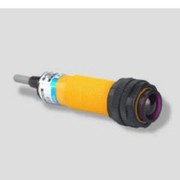Points For Attention in The Scientific Use Of Circuit Breakers
Aug 16, 2021
The DC circuit breaker can be used to distribute electric energy, start asynchronous motors infrequently, protect power lines and motors, etc., connect and disconnect circuits under normal conditions, and can also be used to cut short-circuit fault currents, that is to say, it is also responsible for The dual task of control and protection. However, in recent years, circuit breaker accidents have occurred together. Common breaker failures, overheating, excessive noise, and more serious accidents include sudden burning and explosion of circuit breakers. The following editor will summarize the reasons for the explosion accident and the corresponding solutions for everyone.
Before installing the DC circuit breaker, strictly check its performance indicators to meet the technical requirements. Because if the maintenance quality does not meet the requirements. If you randomly change the opening and closing speeds during the maintenance, and randomly change the arcing distance of the circuit breaker, the breaking capacity of the circuit breaker will be reduced. If the breaking capacity of the circuit breaker is too small; when a short circuit occurs, the circuit breaker cannot cut off the short circuit current, causing the circuit breaker to explode and catch fire.
Improper operation and maintenance. After the DC circuit breaker cuts off the short-circuit current for many times, if the maintenance is not arranged in time, it will force the power supply many times, so that the circuit breaker is affected by the short-circuit current many times. These all reduce the breaking capacity of the circuit breaker and cause the circuit breaker to explode and catch fire. Therefore, it is necessary to strengthen operation, maintenance and management. When the circuit breaker is in operation, patrol inspection should be done, and the normal operation of the circuit breaker and the number of fault trips should be counted so as to arrange the maintenance time.
The insulating oil is not pure. A large amount of free carbonization of the oil of the circuit breaker, a large amount of aging, moisture and water in the oil, resulting in impure oil quality, will flashover inside the circuit breaker and cause an explosion. This requires regular insulation tests. Especially the preventive test before the thunderstorm season.
In addition, regular inspections and repairs should be done at ordinary times to ensure the quality of inspections and repairs. Do a good job of preventing moisture, leakage and pollution of the DC circuit breaker to prevent the circuit breaker from entering water and damp. For these electrical devices, such as contactors, it is important to choose high-quality products, but maintenance and crisis prevention during operation are more important.
Summarize the following points to note: the rated voltage of the DC circuit breaker is greater than or equal to the rated voltage of the line; the rated voltage of the undervoltage release of the circuit breaker is equal to the rated voltage of the line; the rated voltage of the circuit breaker shunt release is equal to the voltage of the control power supply; the frame of the DC circuit breaker The rated current of the level is greater than or equal to the calculated load current of the line; the rated current of the circuit breaker is greater than or equal to the calculated current of the line; the rated short-circuit making and breaking capacity of the circuit breaker is greater than or equal to the large short-circuit current in the line; the single-phase-to-ground short-circuit current at the end of the line is greater than or Equal to 1.5 times the instantaneous (or short delay) tripping current of the circuit breaker; the type of circuit breaker should meet the requirements of installation conditions, protection performance and operation methods.
Suggestions below:
(1) The rated current of the circuit breaker is determined by the calculated current of the circuit;
(2) The short-circuit setting current of the circuit breaker should avoid the normal working starting current of the circuit.
(3) Check the breaking capacity of the low-voltage circuit breaker according to the large short-circuit current of the line;
(4) Check the sensitivity of the circuit breaker according to the small short-circuit current of the line, that is, the small short-circuit current of the line should not be less than 1.3 times of the short-circuit setting current of the circuit breaker;
(5) Check the rated short-circuit making capacity (expected peak value of large current) of the circuit breaker according to the short-circuit impulse current on the line (that is, the large instantaneous value of the short-circuit full current), that is, the latter should be greater than the former.







